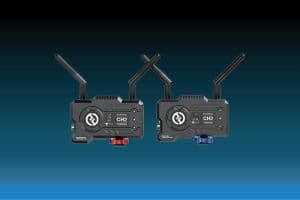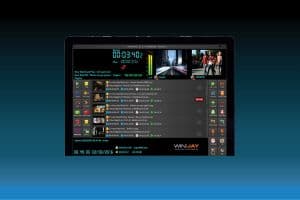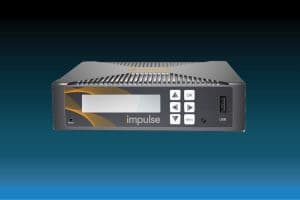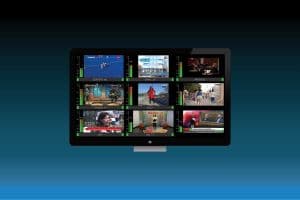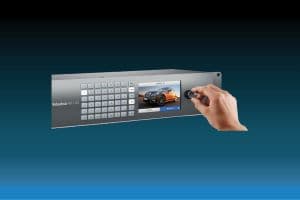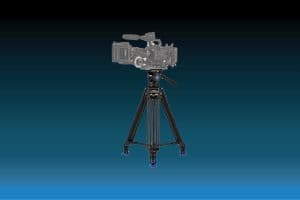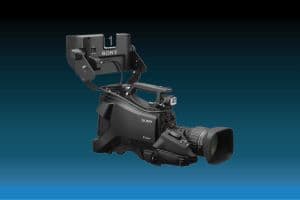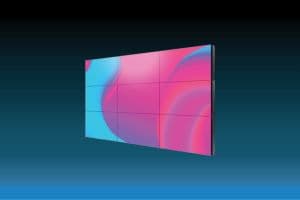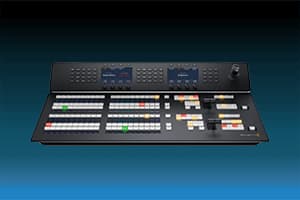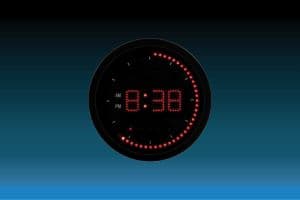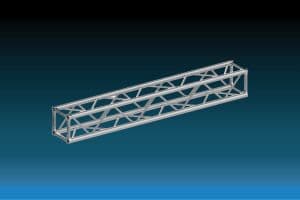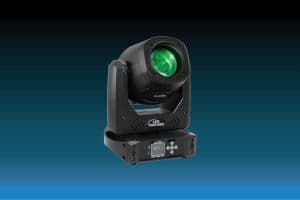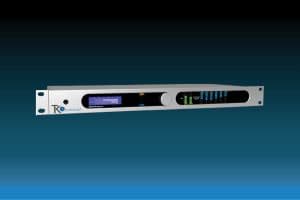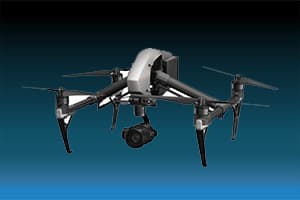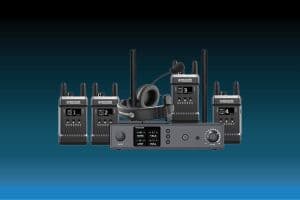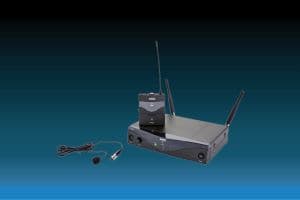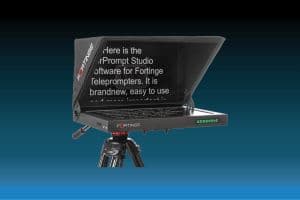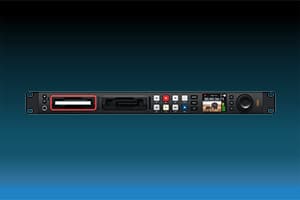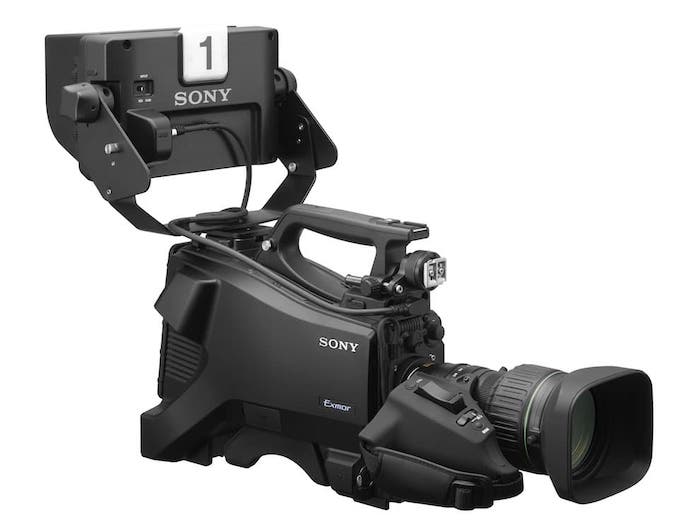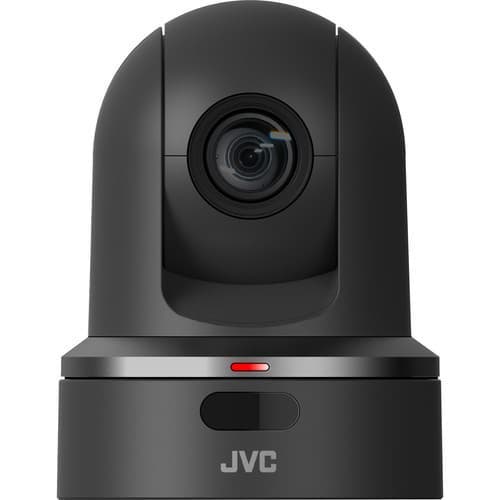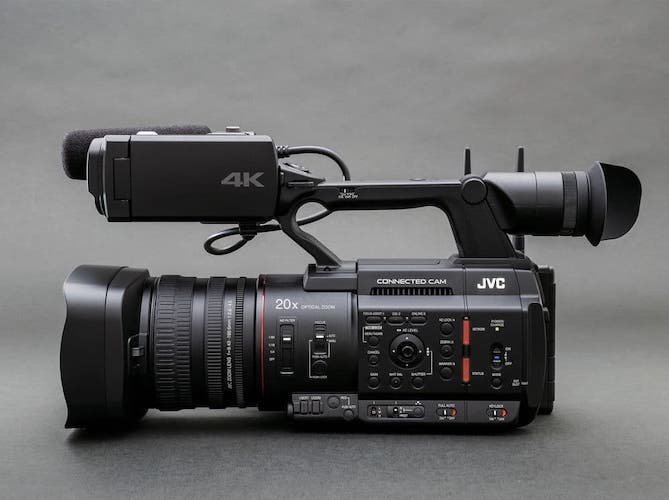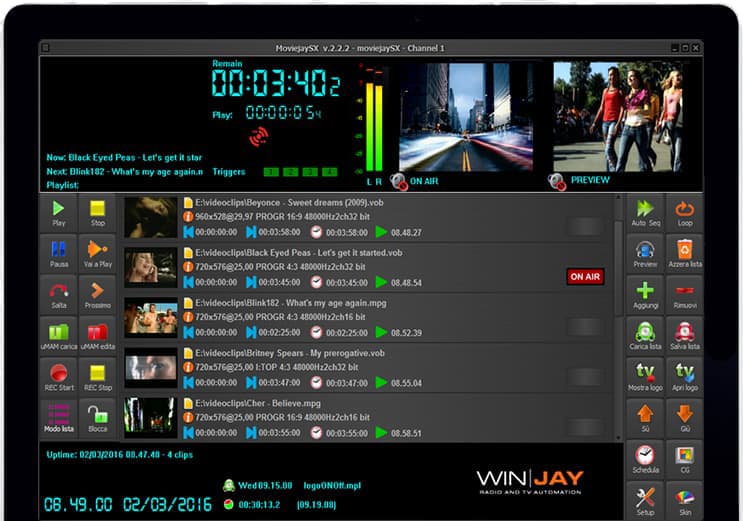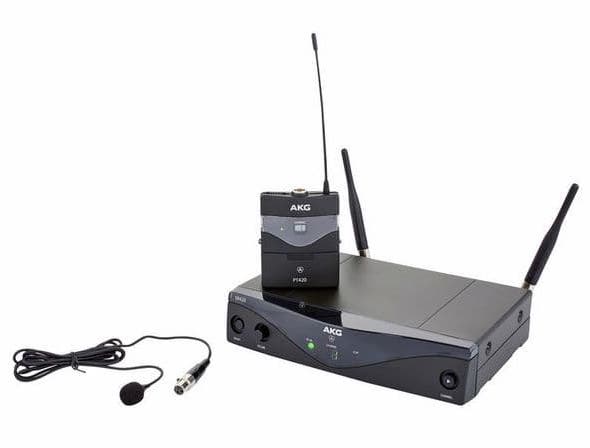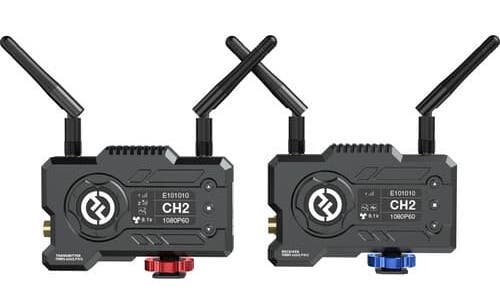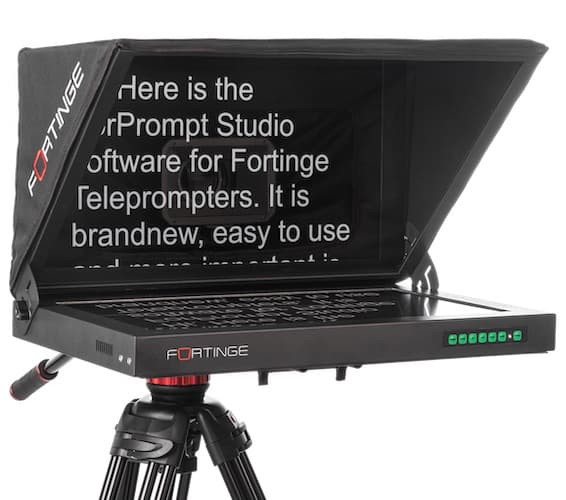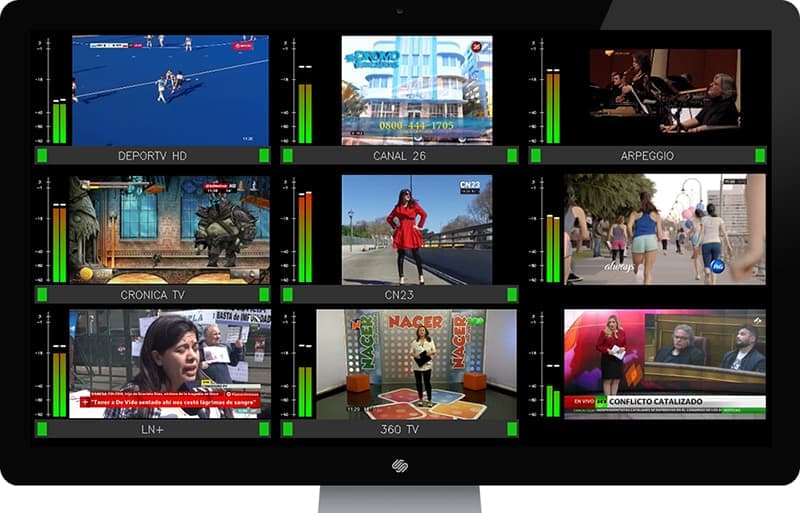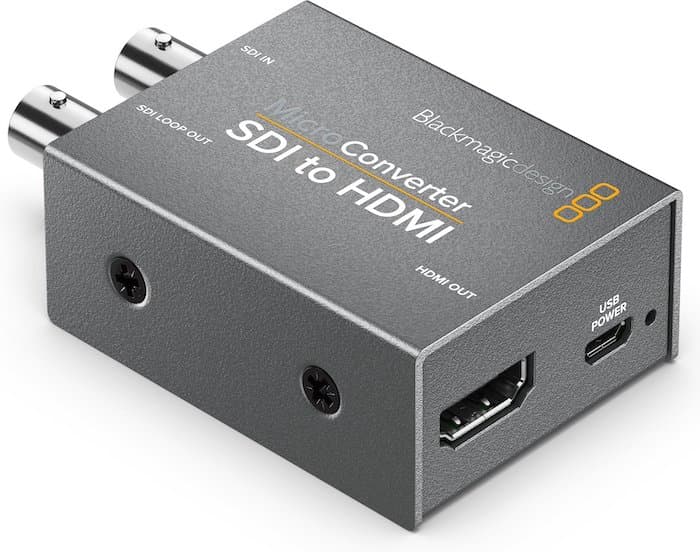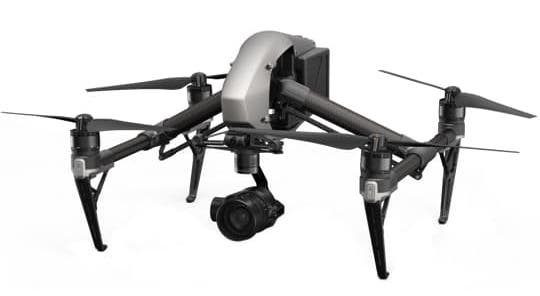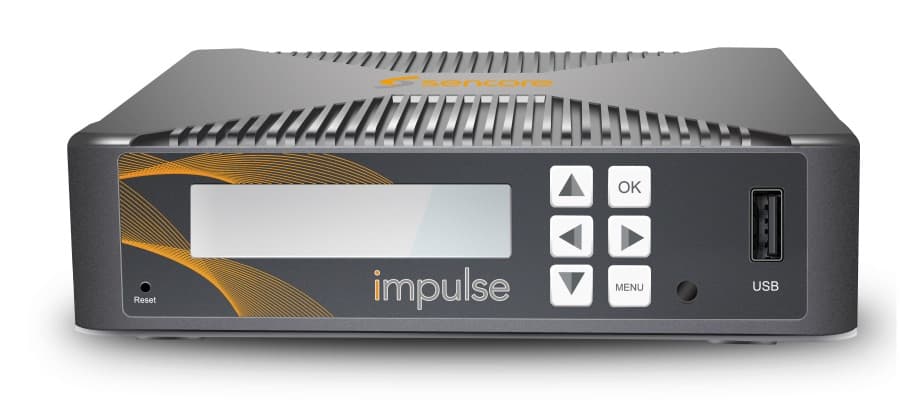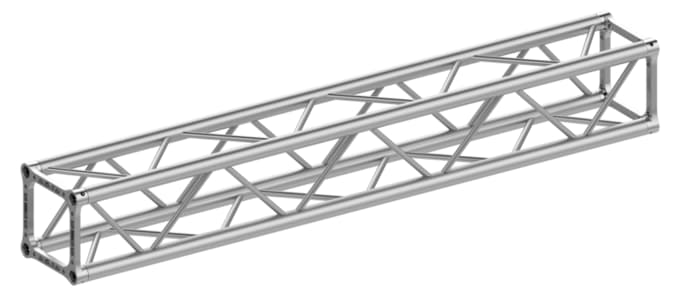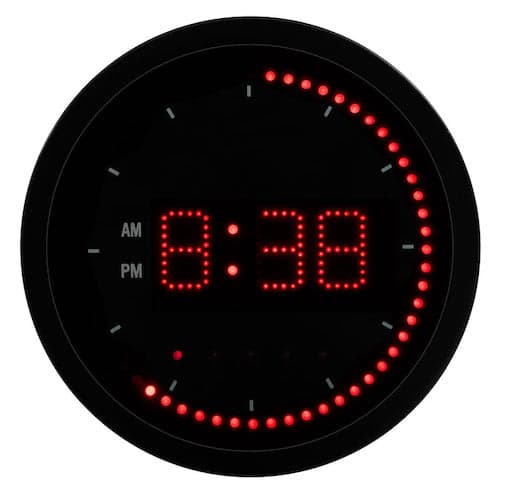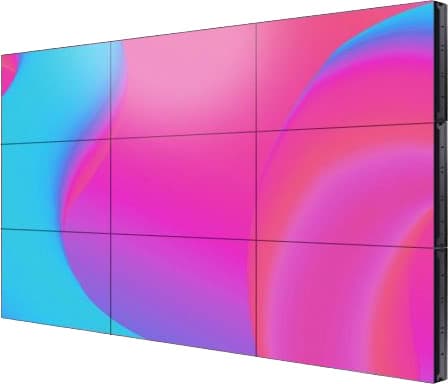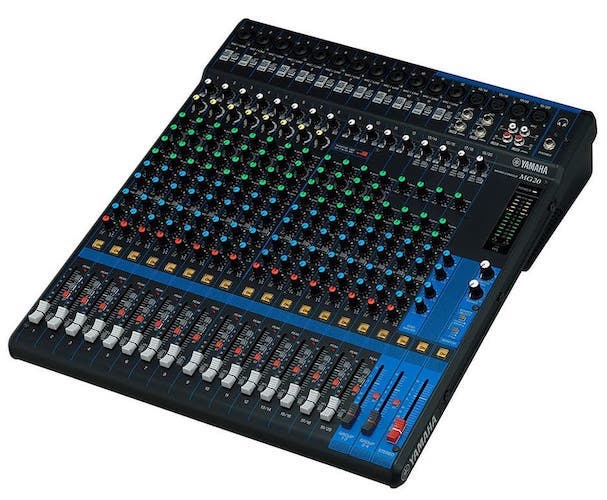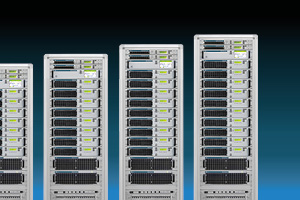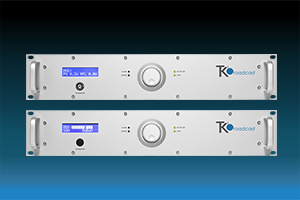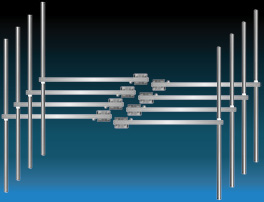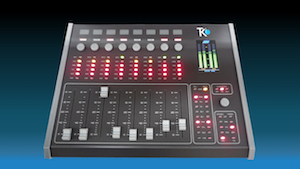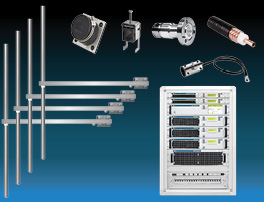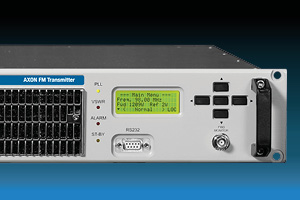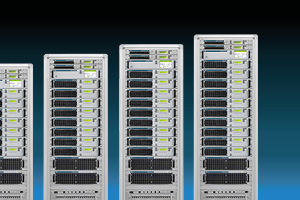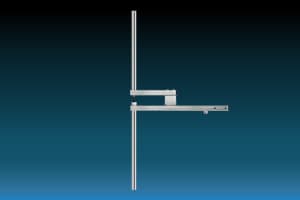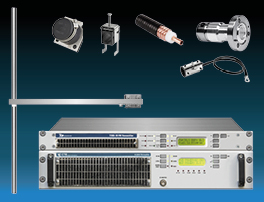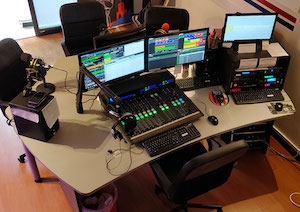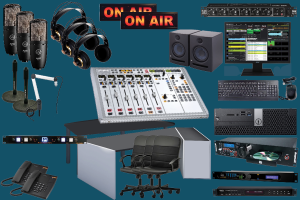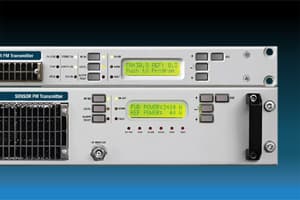Index
- What is a Television Studio?
- List of Video Studio Equipment
- Video Mixer
- Video Router
- Camera Equipment
- TV Automation Software
- Video Recorder
- Audio Equipment
- Video Transmitter
- Intercom System
- Studio Prompter/Teleprompter
- Audio and Video Monitoring
- Audio Processing
- Converters
- Drones
- Encoders and Decoders
- Studio Accessories
- Lighting
- Truss
- Studio Clock
- Tripod
- Video Wall
- Answering some FAQs
- Composition of a television studio
- Staff of a TV studio
- How many cameras?
- Where to place them?
- One camera for all?
- Further video studio equipment?
- NDI technology?
- Summing up
What is a Television Studio?
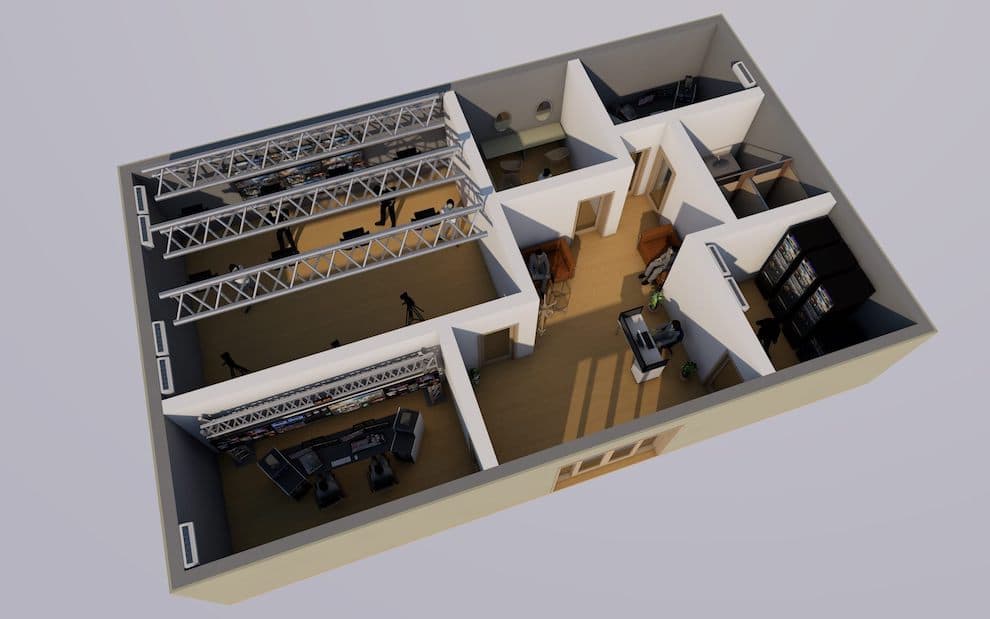
A Television Studio, or Television Production Studio, is an installation room specifically equipped for video productions:
live, or pre-recorded (which then go into post-production).
A good television studio has several separate rooms, and members of staff communicate from one room to the other through the use of specific equipment - which you will find listed further down this page.
What equipment do you need for a complete TV or Video production Studio?
At TEKO Broadcast, we sell video production studio equipment for all types of TV radios and radio vision studios.
We cover the whole range: from low-cost, budget equipment for those who are just starting out and can only spend a few thousand euros;
to the best, top-quality equipment that will cost several thousand euros - even millions - to those who are ready to invest in a proper set-up.
Whatever your budget, ambitions or plans are, here is a list of the essential equipment for a Complete Video production Studio Package:
Video Mixer/Switcher
The video mixer is arguably the core element of a television studio.
It allows you to air the desired source via simple or complex transitions; create and manage virtual sets; superimpose graphics or texts.
You can find "all-in-one" video mixers, such as Blackmagic Design ATEM Television Studio HD, ideal for small studios of up to 4/8 cameras.
Alternatively, you can find mixers with one core, to which all the sources and the control surface are physically connected.
These are available in several versions, with variable numbers of inputs and work layers.
There are also software mixers - like V-Mix - which use I/O video cards, such as Blackmagic Design Deck Link.
In this case, everything is controlled via computer.
This type of mixer, being cheaper, is generally preferred for small studios with just a few cameras, or for external live streams
such as sports events and conferences.
Video Router
The video router - or matrix - is the sorting center for the signals of one or more studios.
It has several inputs and outputs, allowing you to send SDI input signals to one or more SDI outputs.
It makes it possible, for example, to send the final signal of a video mixer to the whole chain of equipment that manages the DVT transmission,
and, at the same time, to the encoders for the satellite transmission, or to the production studios for the recording and editing of the signal.
Each router can be managed remotely via control panels or via software.
Camera Equipment
Professional cameras can be divided into three main categories:
- Studio Cameras
- PTZ Cameras
- ENG Cameras
Studio Cameras
Originally designed specifically for video studios, these cameras have greatly evolved and become very popular,
extending their potential to many other applications: music videos, news, sports, events, etc.
They come with interchangeable lenses, so as to adapt to this wide variety of uses.
PTZ Cameras: What are they and why are they important?
PTZ stands for: Pan, Tilt, Zoom - which means that these cameras can move horizontally, vertically, and zoom in or out.
PTZ camera systems are becoming more and more popular and they are an essential part of video studio production nowadays.
This is mainly due to the fact that having a cameraman behind each tripod-stand or handheld camera is a very expensive procedure:
since several PTZ cameras may be managed by one person only, this dramatically reduces the costs.
Modern TV reality shows - such as Big Brother - use about 30 PTZ cameras all managed and controlled remotely, from the outside.
It is a typical example of how PTZ cameras are employed: they are all hidden or placed at different heights and in different locations,
and there are no operators to physically move and control them.
ENG Cameras
ENG cameras, on the other hand, are mainly used for external recordings, such as reportages,
which are then edited in the production studio before being aired.
TV Automation Software
To properly manage the scheduling and the video stream of a television station, a software is necessary.
This type of software, interfaced with acquisition and playback cards, can receive and send signals from and to the direction.
The main software, which no television studio can do without, is the Playout.
It can manage the whole schedule, which is automatically generated based on settings and filters.
Alternatively, it can be used manually to create multimedia content.
It can also manage and schedule commercials and adverts, depending on the station’s needs.
Furthermore, it creates official reports on what is broadcast,
thus taking care of the documentation that is to be submitted to the regulatory agents.
There are also other types of software, such as the Video Logger.
These can record continuously - 24/7 - any chosen signal, and make life much easier for those who operate in countries
which require you to store all your content for a period of 90 days.
Video Recorder
Video Recorders allow you to record a video signal directly onto SD cards or SSD hard disks
to then be edited by the production studio, or to simply play a pre-recorded signal.
Good-quality broadcast deck recorders also give you the possibility to sync multiple units.
Audio Equipment
We include in this category all the equipment that is used to manage the audio of a television station.
All the signals go through the mixer, are there processed and sent, via auxiliary channels,
to the speakers to be monitored, to the telephone hybrids, and to the host's in-ear monitors.
The main signal, on the other hand, is embedded into the video signal only after it has been delayed:
so as to sync the visual labial with the acoustic one.
The syncing between audio and video can be achieved by using specific audio delayers or, if available, by using a video mixer with audio inputs.
Of course, you also definitely need high-quality desk radio microphones
(gooseneck and cardioid condenser) with their own splitter antenna system - to be mounted in a rack.
Video Transmitter
Video transmitters are designed to carry video and audio signals from one place to another.
They normally come in pairs: a transmitter, or "sender", which is connected to an input signal - for example,
a CCTV camera or a television set -; and a receiver, which picks up the signal and sends it to a screen.
A good videotransmitter will be able to sustain wirless video transmission at a low latency and support connection to more than one receiver as well as monitoring of more than one mobile device.
Intercom System
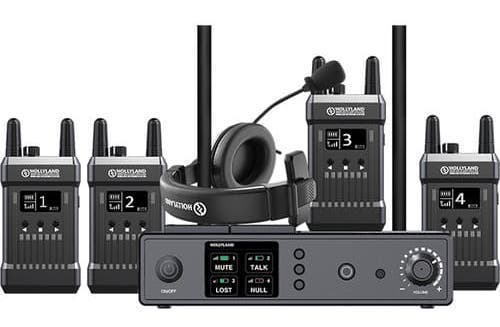
An intercom - or wirless transmitters - system, serves the purpose of connecting multiple people across several rooms or spaces.
It is an essential piece of equipment, guaranteeing rapid and efficient communication between directors,
cameramen and all the members of staff of a television program.
The director is the one who gets the most out of this piece of equipment, as he has the power to instruct -
explaining what to do, what to capture, where to point the cameras, etc. - even those who are not within his immediate visual field.
They can be wired (usually for direction and cameramen) or radio-controlled (scene directors, audio operators, etc.);
small and compact, perfect for any type of environment and able to cover a wide range of distances.
Their lithium batteries normally last for many hours, giving the operators the chance to work all day on one cycle of charge.
Wireless transmitters are brilliant tools when it comes to shooting television, film, or just video in general,
as they offer extreme flexibility and adaptability.
Studio Prompter/Teleprompter
Studio prompters - or teleprompters - are fundamental during news, sports and weather programs.
They allow the host or journalist to easily read the prompts without looking away from the camera.
They are managed by computer software and - professional versions only - are able to support cameras of any size.
Audio and Video Monitoring
Monitors make it possible for studio operators to check audio and video signals travelling between one direction and the other,
internally as well as externally.
They are installed in the studio, and the biggest ones serve the purpose of informing hosts, guests, audience
and all those working on the show about what is currently being aired.
Audio Processing
Identically to what happens for the video, the audio of a station is first embedded into the SDI signal,
to then be processed and re-embedded into the now-ready-to-be-broadcast SDI signal.
The Audio Processor is then a very important piece of equipment, as it is usually the last one you use before your audio is transmitted.
Converters
There are many different types of converters that can be used differently within a television studio.
SDI-to-HDMI converters, for example, are necessary if you wish to send any SDI signal to the studio or direction monitors.
Then there are Audio-to-SDI converters, which allow you to embed the audio signal to the video one.
SDI distributors can provide you with up to 8 identical outputs from just a single input,
without having to get a very expensive matrix for that.
SDI-to-Fiber converters allow you to send SDI signals to greater distances than those supported by the SDI itself.
There are also converters which allow you to edit the video format: when, for example,
all the signals in the studio are in HD but the transmission system is in SD.
Drones
Unmanned aerial vehicles (UAV), commonly known as "drones", have become wildly popular over the last 10 years.
This is largely due to the fact that they make it incredibly easier and quicker to solve multiple problems for which rare
and very expensive equipment once was necessary.
Cinema and television have now adopted the drone as a mean to take aerial shots and more,
making it an essential piece of equipment, complementary to the camera.
Using a drone - which is equipped with a highly stabilized camera -
means both dropping and renewing many of the machines and techniques of video shooting:
airplanes and helicopters, dollies and steadycams used to take panoramic shots, aerial shots, and sequence shots.
Encoders and Decoders
Encoders and Decoders are necessary pieces of equipment used to transport the audio and video signal
from one point to another via the internet, via fiber or via wi-max point to point.
They are used, for instance, to send signals to satellite providers or to the DVBT transmission position.
In other cases, portable models can be used to send the ENG camera signal to the direction during live events or journalistic reportages.
Studio Accessories
Lighting
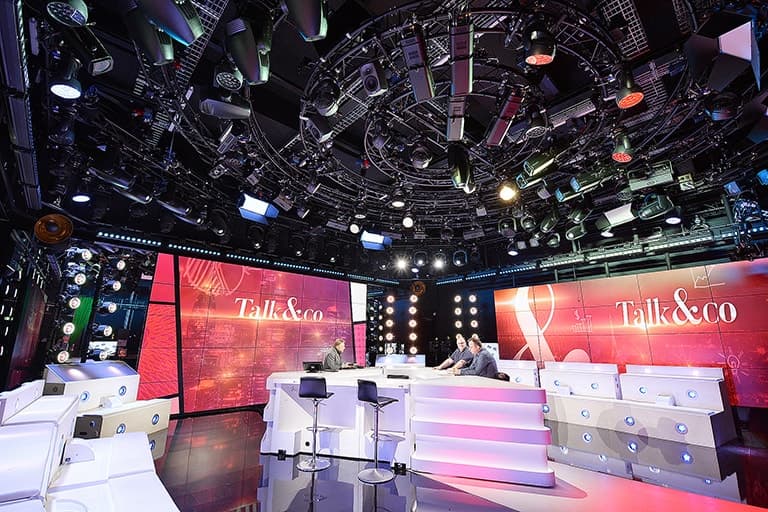
In a professional studio, it is essential to have proper lighting, especially when using virtual sets with a chroma key -
in these cases, the lighting will have to be strong and evenly spread throughout the scene.
As a point of reference, you need at least 20 LED panels for a 20 square meter studio.
The bigger the studio - and the higher the ceiling -, the more lights you are going to need.
Apart from the standard white lights, there are many lighting effects you can install,
either on the ceiling on trusses or directly on the floor around the scene.
There are many special effects on the market, mobile heads being the most popular. Managed by a specific control unit via the DMX protocol,
they are used to create special dynamics and atmospheres.
Even more spectacular is the combination of these with smoke machines, which highlight the light's beams and shapes.
In the case of plays, Par LEDs are widely used.
These are directional projectors which, thanks to the latest LED technology,
allow you to change color (via the DMX control unit) without having to manually adjust the light itself.
They can be installed both on the ceiling or on the floor.
Very popular are also LED bars. These are illuminated bars about 1 meter long (depending on the model)
which project a steady light in the chosen color, or can also generate light-chasing effects still managed by the DMX unit.
They are used to create a perimeter around the scene, or special effects when installed on the ceiling.
Apart from smoke machines, there are other types of machines that are used to achieve the desired effect: snow, wind, foam, etc.
Truss
Trusses allow you to install all the lights that you will use for the scene.
They are generally installed on the ceiling, or, sometimes, on mobile lattices for ease of maintenance.
It is of paramount importance that the trusses you use be of high quality:
just imagine hundreds of lights on a truss falling down on the scene, over the people who are in it...
Installing lights on a truss has its own logic too. On a ceiling-truss, for example, are generally installed all the white lights,
which are used to properly and evenly light the whole studio.
Studio Clock
As much as it may seem a trivial accessory, studio clocks are essential when it comes to timing the program's schedule,
and they are a point of reference for all the members of the crew.
Tripod
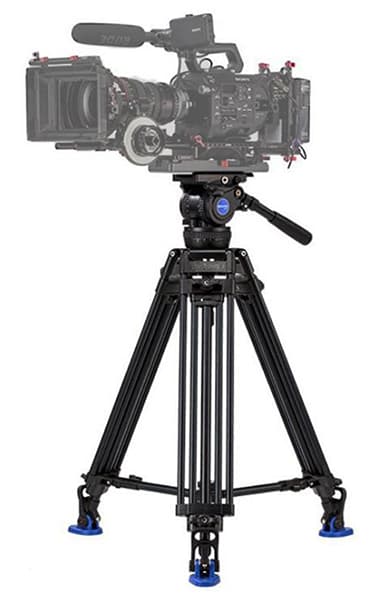
Included among camera accessories, tripods are definitely one of the most indispensable ones.
It is a fundamental tool which guarantees a proper use of the cameras in the studio, limiting all sharp movements while shooting.
They come in different materials:
- Carbon: more expensive but lighter, generally used for outdoor shooting given the ease of transportation;
- Aluminium: the most popular;
- Steel: for specific applications such as supporting the camera and heavy zooms.
It is very important to take into account the weight of the equipment that is to be supported by the tripod.
They can have mechanical extension or controlled pneumatic extension for the most performant versions.
The pneumatic suspension keeps the camera with all its accessories stable, and even with high weights
the operator will be able to move the camera with little effort.
They can be fixed to the ground or installed on specific wheels to be moved easily around the studio.
Different heads - depending on the user's necessities - can be mounted.
Video Wall
A video wall is a maxi screen composed of a variable number of modules.
These can be combined to reach the desired dimensions of the screen.
Each element can visualize just a part of the overall image,
which is ultimately showed in its entirety by the combination of all the screens - much like in a mosaic.
Video walls are generally used in talkshows or news programs, to show multimedia and external signals (news or sports reporters) in the studio.
It is not advisable to use them in virtual studios, where the background of the scene is managed via a chroma key.
Answering some FAQs about Video and Radio Studio Equipment
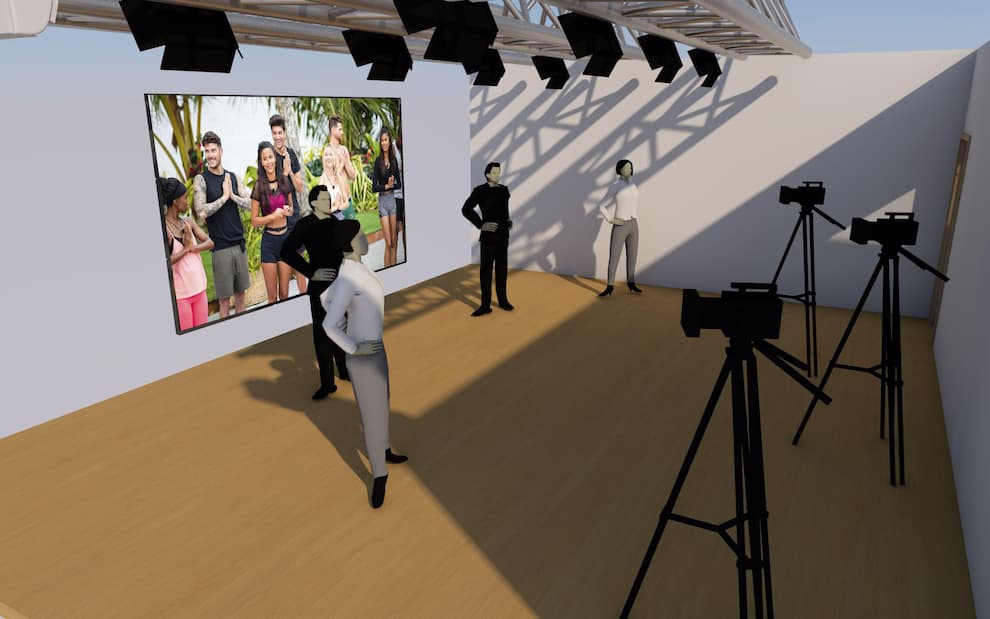
What is a television studio composed of?
A television studio can be divided into two macro areas: the studio itself, and the technical area.
The studio is where the program actually happens. This can be a news bulletin, a weather forecast, a talk show, a quiz show, an entertainment program, a sports program, etc.
Depending on the number of spectators and on the type of activities involved, studios can be very big or small (as is the case for news and weather forecast programs).
There are two types of studios: real and virtual.
Real Studio
Real studios are furnished according to the type of show, with furniture such as: sofas, cabinets, desks, tables, video walls, scenery sets and so on.
It is essential that real studios be at least 3 or 4 meters high, so as to be able to install all the equipment needed for lighting the scene
and creating special effects without disturbing close-ups and half-length shots.
Depending on the size of the room, cameras can be installed either in front of or around the scene, mounted on tripods for regular shots, or on tracks or jibs for more spectacular ones.
In some cases, when the type of the show requires it, it is possible to install robotic cameras on tracks on the ceiling, crossing the scene from above.
Apart from the cameras, monitors should also be installed, allowing both the hosts and the audience to know what is actually being aired.
This is useful, for example, when commercials are about to end and the director is about to take the studio cameras on the air again.
Often, all of the camera signals are sent to specific monitors, allowing for a multiview.
This is incredibly useful to directors, as they can easily decide what to do - during interviews where several guests are in the studio, for instance.
On the other hand, when the speakers are joined externally - a news correspondent, or a sports journalist attending a football match -
then large monitors or video walls are installed and recorded live in the studio.
Loud speakers are also necessary, so as to have a good overall acoustic within the studio, resulting in high-quality communication.
This is especially important in the case of big studios, so that the guests can clearly hear each other as well as the external speakers.
Virtual Studio
A virtual studio is realized using the chroma key technique.
Walls and floor are painted in a special green color. Alternatively, green screens can be hung all over the room.
Thanks to the video mixer, it will then be possible to edit the images, substituting the green background with anything the director wishes to insert:
a clip, an image, a virtual studio.
When using the chroma key technique one must pay special attention to a few essential details that will make the recording a successful one.
First of all, the lighting must be evenly spread across all of the Cartesian axes. If any shadows were present,
then these would be wrongly interpreted by the software that edits the green color, creating very unprofessional effects.
Also, both the hosts and the guests should wear clothes that bear no resemblance to the green tint. The better the contrast, the more realistic the result.
Studio Control Room
We have now come to the technical area, involving all the essential operators who are "behind the scenes" and make things possible.
The Control Room is the room where all the camera and microphone signals converge.
It will be then up to the director and the audio technician to manage each signal, using equipment that we are going to illustrate below.
Editing Room
Apart from the control room, there are other types of rooms such as the editing ones, where recordings are edited before being aired.
Final Master Control Room
For complex stations, where there are several television studios, it is necessary to have what is known as the 'Master Control Room'.
This is where all the signals from all the studios converge. From here, one can chose where to send each signal.
Once out of the master control room, the signal is then sent - via matrixes and video links - to the transmission systems, the loggers, the editing studios or the streaming server.
Back Stage and Make-up Room
This is the room that has been specifically set for the make-up of hosts, guests and stars.
What type of staff typically operates in a studio?
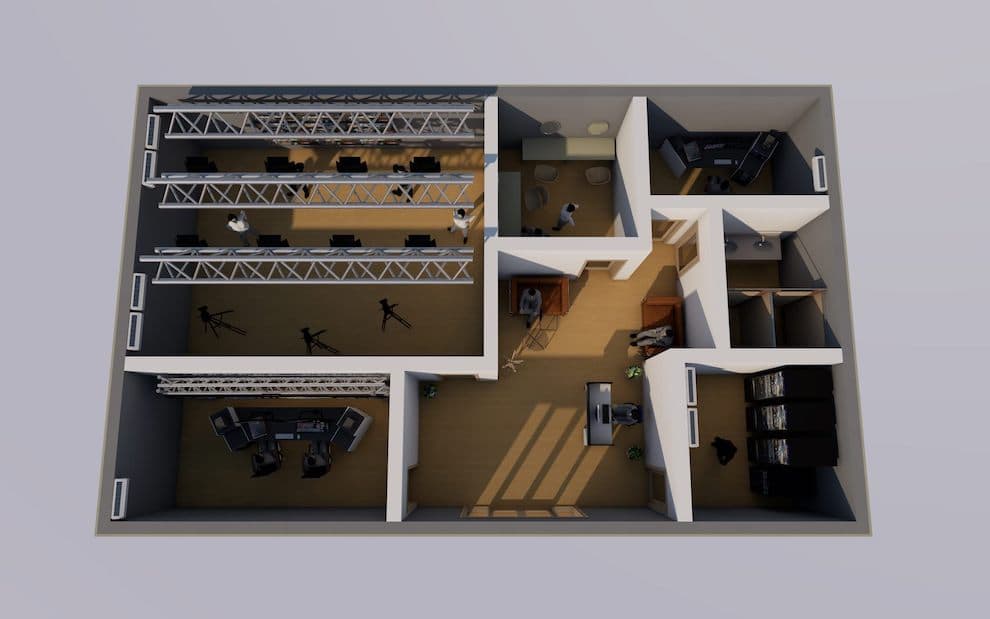
In order to properly function, a television studio normally needs the following professionals:
- Technical director
- Audio mixer operator
- Video mixer operator
- Lighting operator
- Choreographer
- Director
- Cameraman
- Host
- Make-up artists
Further members of staff are:
- Presenters
- Journalists
- Guests
How many cameras do I need in a video or television studio?
You need at least one or two cameras on a tripod stand - to be handled by a cameraman during the recording,
following the director's instructions - and several PTZ cameras placed around the studio.
Where should I place my cameras?
You can place them in different spots and at different heights: some higher up, others lower down.
It also depends on whether there is an audience or not: in that case, you may think about using a rotating camera to move around the audience.
Could I use just one camera to move around the studio?
If you wish to move freely and safely around the studio with your camera, then you need a very high-quality PTZ camera - which is, of course, very expensive.
Generally, you need more than one camera - and they don't have to be top-quality.
You first position and point each camera in the desired direction, to then control it through the mixer.
It is very important to bear in mind that trying to do everything with one piece of equipment means taking a great risk.
If that piece of equipment breaks down or just stops functioning while you are streaming, then there is nothing you can do and you're out.
This is something that people often do not realize, and this is why having spare or extra components - extra chargers, spare batteries, more than one camera -
could be vital to the success of your broadcasting.
What other important equipment do I need to properly set up my Video Studio?
To manage the different signals travelling through the network, you need to set up a LAN infrastructure
with devices that support high-speed streaming - we're talking gigabits.
This way, all the cameras will do anything you would like them to do when commanding them via a computer's control panel.
This allows you to do what a matrix once did: the cameras generate a video signal, which generally enters - through, say, 8 inputs and outputs -
the video matrix, which, in turn, distributes it and manages each camera's input and output: thus controlling its movements and functions.
External sources are also to be taken into account, and they are normally played from a video recorder or another computer,
and stored on a server where any file can be picked out on command.
This is called MAM: it is a server that manages an entire database of files, producing them upon query.
What is NDI technology?
NDI is non other than the conversion of video camera signals to computer signals - ID - from a LAN network.
The NDI protocol was invented in the USA and it is a very efficient protocol, especially from a compression point of view: it can offer a very high quality.
There are two types of NDI. The NDI HX type, used by small cameras, has a small latency,
while the Full NDI type has little to no latency - meaning there is no delay during data acquisition -, allowing you to do pretty much whatever you wish.
To sum up, what is the essential video equipment for a small Television Studio or Radio Station?
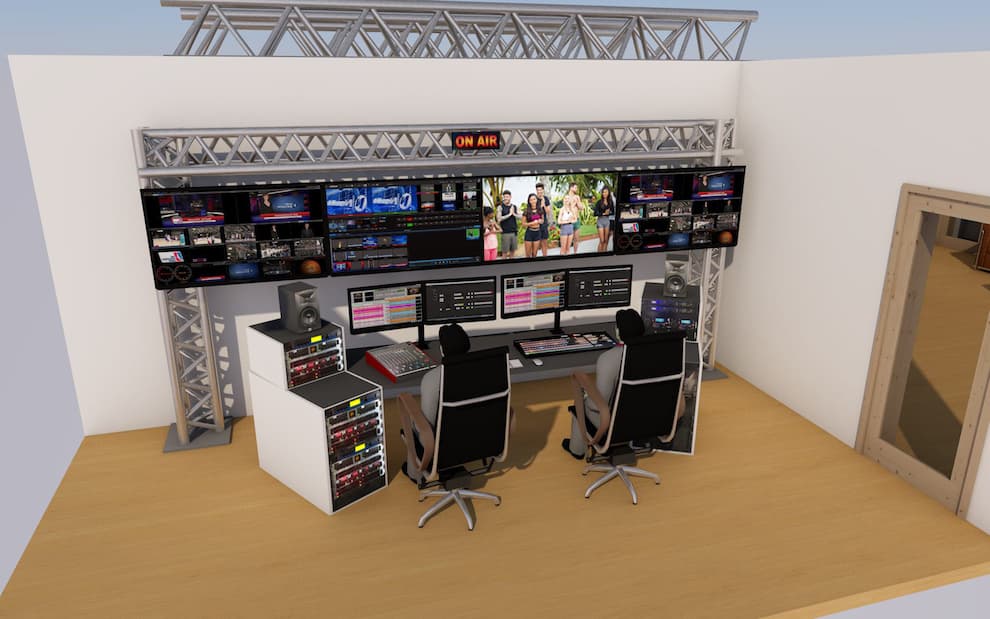
You definitely need a mixer.
Blackmagic makes budget mixers which provide you with many functionalities. ISO mixers, for example,
even allow you to record all the channels at the same time.
Roland also makes good mixers at an affordable price - a few thousand euros. They work and perform very well.
An important feature of Roland mixers is that they will let you use the same Chroma Key (a green screen used for backgrounds)
across multiple cameras while streaming - something you are definitely limited in with lower-budget mixers.
You also need a computer to manage the final SD encoded signal and control the streaming separately.
And, of course, you need cameras.
Some of the best names - hard to find right now - are Canon, Panasonic and Sony. JVC also makes good-quality cameras.
We hope this guide has been a helpful tool in answering and clearing all your doubts (we understand you may have many!) about video studio equipment,
and we look forward to assisting you even further in your journey towards the creation of your own TV and radio station.
The TEKO Broadcast Team.
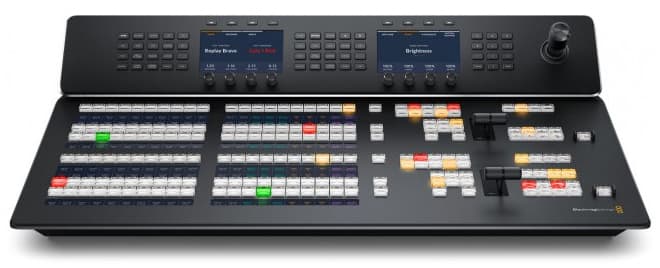
 VIDEO TRANSMITTER
VIDEO TRANSMITTER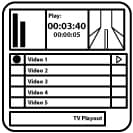 TV AUTOMATION SOFTWARE
TV AUTOMATION SOFTWARE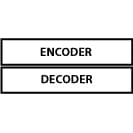 ENCODERS & DECODERS
ENCODERS & DECODERS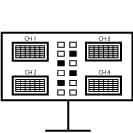 AUDIO & VIDEO MONITORING
AUDIO & VIDEO MONITORING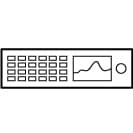 VIDEO ROUTER
VIDEO ROUTER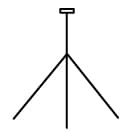 TRIPODS
TRIPODS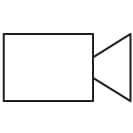 VIDEO CAMERAS
VIDEO CAMERAS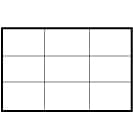 VIDEO WALL
VIDEO WALL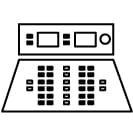 VIDEO MIXER
VIDEO MIXER STUDIO CLOCKS
STUDIO CLOCKS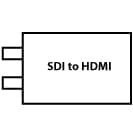 CONVERTERS
CONVERTERS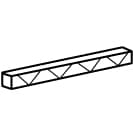 TRUSS
TRUSS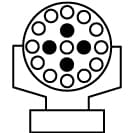 LIGHTING & SPECIAL EFFECTS
LIGHTING & SPECIAL EFFECTS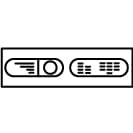 TV AUDIO PROCESSORS
TV AUDIO PROCESSORS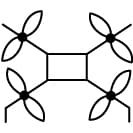 DRONES
DRONES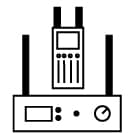 INTERCOM SYSTEMS
INTERCOM SYSTEMS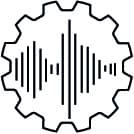 TV AUDIO EQUIPMENT
TV AUDIO EQUIPMENT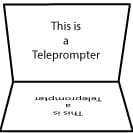 TELEPROMPTER
TELEPROMPTER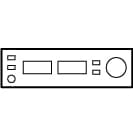 VIDEO RECORDER
VIDEO RECORDER